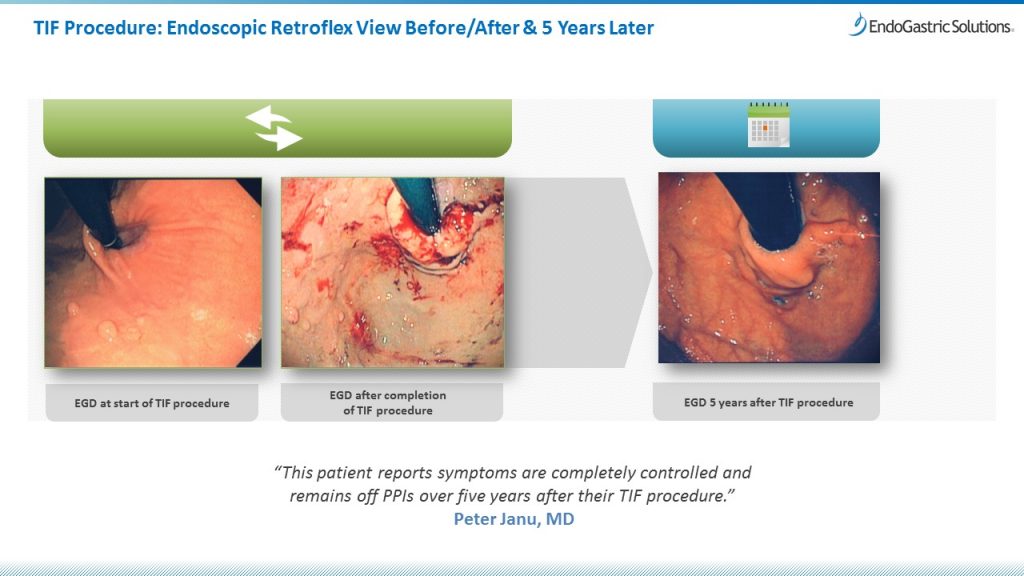Here is an overview of patient care instructions to help you prepare you for the TIF procedure. As a patient, you play an important role in a successful outcome of a TIF procedure–controlling GERD symptoms. You will learn what you should do to prepare for the TIF procedure, what will happen while you are under anesthesia, and the TIF recovery process which allows your newly formed valve to heal.
Before the TIF Procedure
Because the surgery is performed under general anesthesia, preparation is similar to other surgeries. Specifically, you must refrain from eating and drinking for several hours prior to the procedure. Tell your physician about all medications you are taking to determine if adjustments need to be made. This is because the TIF procedure is performed inside your stomach; it makes sense that you don’t want any food or medicine inside. If there’s undigested food or medication in the stomach, you risk the procedure being canceled after you are already under anesthesia.
During the procedure
The TIF procedure is performed under general anesthesia and generally takes less than an hour. If you need a hiatal hernia repaired, this will happen laparoscopically immediately before the TIF procedure. The physician uses the EsophyX device to repair the antireflux valve.
The physician will introduce the EsophyX device with an endoscope down the center of the device guiding through the mouth, esophagus and into the stomach. The endoscope lets the physician see what he or she is doing. The physician uses the EsophyX device to reconstruct the antireflux valve. This involves wrapping the upper portion of the stomach (fundus) around the damaged lower portion of the esophagus and securing it with polypropylene fasteners (fundoplication). You physician leaves fasteners in place to secure the newly constructed valve while you heal. There’s no need to remove them; typically, the body heals around them.
After the TIF procedure
The TIF procedure is very safe. Most patients can return home the same or following day and can resume most ordinary activities within a few days. However, patients should expect to experience some minor discomfort in their shoulder, stomach, chest, nose, and/or throat for up to three to seven days after the procedure. Your physician will likely prescribe some specific medications to help manage your any discomfort or nausea you may experience.
Depending on the type of work you perform your doctor will advise when to return; usually a few days for most office or computer-based work. If your job is physical and involves lifting, your physician will help you determine when to return to work. Patient compliance with your physician’s recommendations after the procedure to allow for proper healing. Retching, vomiting, or excessive physical activity within approximately four weeks after the procedure may adversely affect the surgical repair.
The physician or other healthcare professional will typically recommend following a modified diet with graduating texture–clear liquids, full liquids, soft food–introducing each new texture on a schedule. Watch the animation to more fully understand the reason for the modified diet and limiting physical activity.
Specific instructions will vary patient-to-patient and at the physician’s discretion. For best results, patients should follow your physician’s instructions completely.
For more information about the TIF procedure, find a physician qualified to treat GERD near you. You can also read more frequently asked questions about the TIF procedure.
6) What is serosal fusion animation segment from EndoGastric Solutions on Vimeo.
This is an endoscopic image of a gastroesphageal valve before, immediately after rebuild and 5 years after a TIF procedure.


